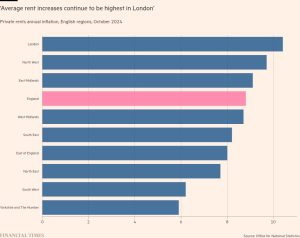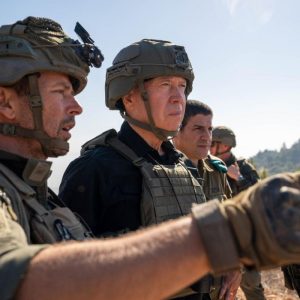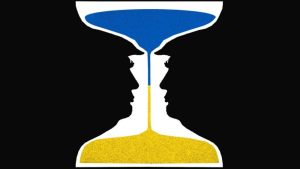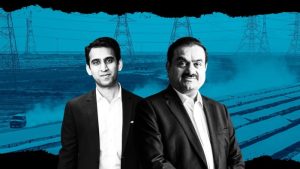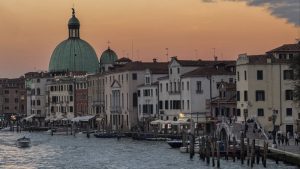The demolitions clearing Israel’s ‘first belt’ in Lebanon
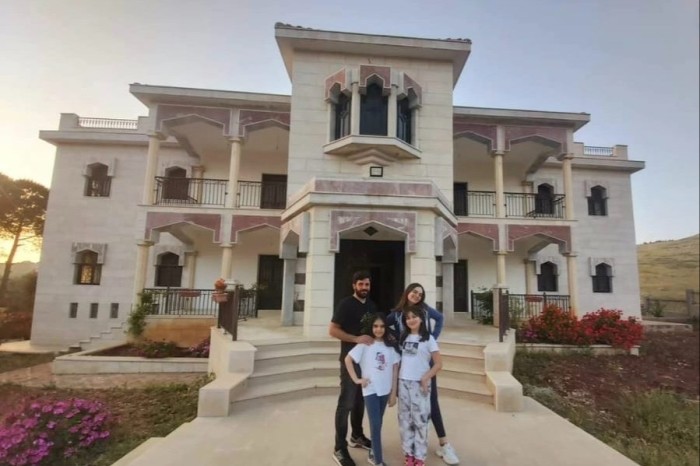
During a year of simmering conflict, Lubnan Baalbaki watched as his ancestral village came under repeated fire, caught up in the fighting between Israel and the Lebanese militant group Hizbollah.
Baalbaki, the conductor of Lebanon’s philharmonic orchestra and the son of a prominent Lebanese artist, had hoped his family’s museum — a rare cultural centre in the rolling hills of southern Lebanon — would be spared.


But last week, his hope was crushed by a video showing a controlled demolition by the Israeli military in Odaisseh.
Watching from the relative safety of Beirut, he saw the house that his father had painstakingly built over 25 years and where both his parents are buried had been reduced to rubble.
“It was devastating for all of us,” said Baalbaki, referring to the impact on his six siblings — among them his sister Soumaya, a singer, and his brother Oussama, a well-known artist. “I’m 43 years old, so I feel that I have lost 43 years of my life with this destruction.”
Satellite imagery analysed by the Financial Times shows the building was destroyed by Israel between October 21 and 23. Video footage captured the buildings collapse amid a series of simultaneous explosions.
Odaisseh is one of at least 30 ancient towns and villages on the border that Israel has damaged since the start of October, many of them extensively, according to FT analysis of satellite imagery and video. At least 12 have had lines of buildings demolished in controlled detonations by the IDF.
The series of village demolitions suggests that Israel is clearing a roughly 3km strip along the two countries’ informal border — a belt of land that bears the hallmarks of a buffer zone.
Footage shared on social media over the past month reveals several controlled detonations — many involving multiple buildings — that have flattened swaths of residential neighbourhoods in one fell swoop.
Moments captured on video include a series of structures being detonated in Aitaroun and the destruction of the mosque in the village of Yaroun.
While the border area is home to scattered villages with majority Christian, Sunni Muslim and Druze populations, those Israel has targeted have primarily been Shia Muslim — communities where Hizbollah exercises control and from which it draws support.
In Mhaibib, a collection of hilltop buildings was blasted away; in Dheyra, a remote detonation destroyed at least one of the town’s three mosques and multiple surrounding buildings. In Odaisseh, there were five simultaneous explosions, each with multiple clusters of blasts.
Israel’s defence minister Yoav Gallant told the FT that the 3km strip, what he called “the first belt”, was “progressing in terms of being cleaned of Hizbollah’s attack infrastructure”. He added that his troops’ ground offensive into Lebanon would continue “as long as it’s needed”.
Earlier this year, the FT documented how Israeli air strikes had already rendered those areas largely uninhabitable.
But in September, Israel’s objectives shifted, as it ramped up its campaign to debilitate Hizbollah, killing the group’s senior leadership and launching thousands of air strikes across the country as well as a ground invasion in southern Lebanon.
Israel now wants southern Lebanon to be free of Hizbollah, warning it would use force if necessary to uphold any ceasefire. The militant group began launching projectiles towards Israel “in solidarity” with Gaza the day after Hamas’s deadly assault last year on October 7, displacing 60,000 Israelis.
Over a year of near-daily barrages, Hizbollah rockets have destroyed homes and sparked fires that have spread across wide swaths of Israel’s northern regions.
The destruction caused in Lebanon during October stretches right along the border.
More than 12 per cent of buildings on the Lebanese side have been damaged or destroyed in the past four weeks, according to FT analysis of satellite images and radar data provided by Corey Scher, a researcher at CUNY graduate centre, and Jamon Van Den Hoek of Oregon State University.
Southern villages have been on the frontline throughout the past year of cross-border fire between Israel and Hizbollah. This intensified after October 1 this year, when invading Israeli troops began ground operations.
Israel’s military did not respond to a request for comment, but says it only targets Hizbollah militants and infrastructure, accusing the group of embedding itself in civilian areas.
One Israeli military official on the northern front told the FT that its recent operations in “the first line of Shia villages across the border [were] against very highly selected assets of Hizbollah”.
The official said Israel had the “very clear objective” of targeting elite Hizbollah forces to remove “the threat of any ground attack” in the future.
The group’s military infrastructure, the official added, was mostly within civilian populations in villages, both above and below ground, including what the IDF says are tunnel networks. “In that essence, we are dealing with what we call a militarised village,” the official said.
Over the past month, many of these villages have suffered extensive damage as a result of Israel’s more aggressive strategy.
While Israeli officials repeat that their war is with Hizbollah and not with the Lebanese people, experts questioned Israel’s systematic attempt to clear the area.
Alonso Gurmendi Dunkelberg, an expert on international law at the London School of Economics, disputed Israel’s notion that these villages are valid military targets, saying that the existence of Hizbollah infrastructure in a civilian area is not enough to justify its controlled demolition — even if the assets could be used against Israel in the future.
“It cannot be considered proportionate,” said Gurmendi Dunkelberg. “Many other countries, including Israel’s allies, have encountered counter-insurgency operations, like the US in Iraq and Afghanistan — and they did not blow up entire towns. What makes this different?”
To comply with the principle of proportionality in international law, Gurmendi Dunkelberg said that the military advantage Israel would need to get from demolishing entire villages “should be enormous”.
In Lebanon, Israel’s actions are being regarded cynically. More than 1mn people, or one in five, have been displaced by fighting and by Israeli evacuation orders.
“There are two reasons Israel is using this detonations strategy,” said retired Lebanese armed forces general Akram Kamal Srawi. The first is to clear lines of sight for potential incursions deeper into Lebanon in an area where Hizbollah maintains the upper hand and has caused significant losses for Israel.
“The second is that Israel has adopted a scorched earth strategy in order to wage psychological warfare on Hizbollah’s base people by televising these detonations and weaken support for the group — which will never work,” he added.
While detonation was the fastest way to destroy the tunnels, Srawi said there were other means, such as pouring concrete. “If you’re trying to demolish them that quickly, it’s because your troops are having a hard time fighting in the south,” he added.
In Dheyra, a picturesque farming village less than 1km from the border, recent controlled demolitions levelled much of the town centre, including at least one of its three mosques.
“What an event,” an Israeli soldier said in a video as the mosque crumples, before members of the group break into religious song.
From Beirut, Baalbaki has already started thinking about returning to Odaisseh and rebuilding.
His father, the late artist Abdel-Hamid Baalbaki who was known for his figurative paintings, had made it his life’s work to transform the Odaisseh house into a cultural centre and exhibition space, using his art teacher’s salary to pay for construction while bringing up his seven children. It was full of his collection of fine art and pottery as well as 2,000 books and manuscripts.
Now the family fears the separate building where their parents are buried has also been destroyed.
“It was a very emotional project for him and for all of us because we grew up . . . with this dream,” said Baalbaki, whose first name Lubnan is Arabic for Lebanon. “I think now more than ever, we believe in the importance of rebuilding this museum.”
Additional reporting by Jana Tauschinski
#demolitions #clearing #Israels #belt #Lebanon




